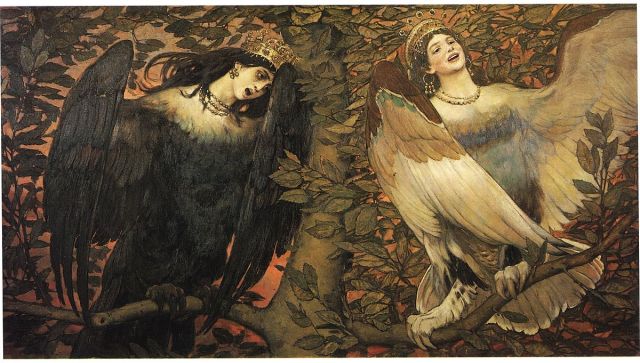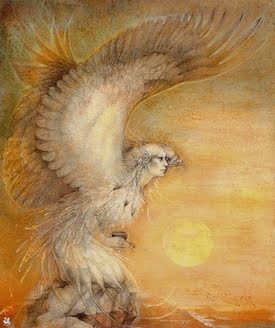“Of course the Man was wild too. He was dreadfully wild. He didn’t even begin to be tame till he met the Woman, and she told him that she did not like living in his wild ways. She picked out a nice dry Cave, instead of a heap of wet leaves, to lie down in; and she strewed clean sand on the floor; and she lit a nice fire of wood at the back of the Cave; and she hung a dried wild-horse skin, tail-down, across the opening of the Cave; and she said, ‘Wipe you feet, dear, when you come in, and now we’ll keep house.'”
Rudhyar Kipling, “The Cat That Walked by Himself“
Marija Gimbutas captures my heart for at least three reasons: she was born in a Slavic country like me (Lithuania in her case, Poland in mine), spent her life in emigration, and stirred the patriarchal archaeological scientific community with her unique theory of old European Neolithic culture. As it is stated in my post’s featured biographical documentary, “her theories painted a new picture of the oldest layer of western cultures.” What is fascinating is that those first communities showed no evidence of warfare: they were based on the principle of sharing and co-operation.

The phrase “Old Europe” refers to Neolithic Europe, or the portions of the European continent inhabited by people who made pottery and lived in small villages, ate domesticated and wild plant foods, between about 7000 BC and around 1500 BC; via http://thesga.org/2009/12/what-is-old-europe/
She never stated clearly whether those early communities were patriarchal or matriarchal. However, the centre of their religious practices was very clearly a worship of the “self-generating Goddess, Giver of Life, Wielder of Death and Regeneratrix,” whose power was “in water and stone, in tomb and cave, in animals and birds, snakes and fish, hill, trees, and flowers.” She embodied the living earth and the wisdom of her cycles of death and rebirth.
In an interview featured in the documentary, Marija Gimbutas said: “The Paleolithic Goddess was the Creatrix. Her body parts like breasts, belly, buttocks, vulva, are the procreative parts of the body ….” The incredibly numerous figurines and images that Gimbutas excavated in the area of Old Europe can be described as amalgams of birds and animals with female form.
What was unique for Gimbutas‘ scientific approach was that she was not happy with the strict, statistical, dry methodology of science, but she preferred a more non-orthodox approach focusing on myth and imagery. She was later shunned by scientific community for indulging her intuition and imagination in what they believed to be excessive and arbitrary manner. However, to me her findings and conclusions are deeply stirring and appealing. What she tried to to do was translate the language of images that comes from over 10,000 years ago. To achieve that, she had to go beyond the narrow confines of her discipline – to synthesize in a visionary way.
Richard Buchan, Librarian from Pacifica Graduate Institute says in the documentary: “She’s pointing out a whole time here, and it’s a time where everyone’s roughly equal in rank, it’s a female-centered culture, not male dominated, it’s relatively peaceful. People can live like that, and still maintain a large village, and an elaborate culture. Some of the late Cucuteni things had, those villages had 15,000 people living in them. Cucuteni, Vinça, Sesklo – our history books never told us these names. Perhaps because without kings, warfare, and conquest, they don’t fit the classic definition of civilization.” In the Neolithic Era humans moved on from a Nomadic lifestyle towards a settled culture. This is the actual cradle of civilization that was thriving much earlier than the cultures of Sumer and Egypt.
Gimbutas decided to step off the beaten econometric track of scientific archaelogy by engaging imagery, intuition, mythology, folklore and poetry. She took a leap of faith, deciding to follow her own truth and a difficult path of a misfit. Because synthesis and a global approach are anathemas in modern science, she consequently lost all her privileges and grants, which did not stop her from pursuing her findings. In her time, hardly any archaeologists were interested in such intangible, unquantifiable matters. Gimbutas, however, even before her emigration to the US, used to collect beautiful folk songs, called Dainos in Lithuanian. She poetically described them as “the rhythms of a bird, a wedding dance, a lament,a liturgy of nature and the milestones of everyday life.” She had started very early to stray from the consensus scientific path.
In an interview, she remembers her early days at Harvard university in the 50s: “There was no real chance to stay as a woman at Harvard, I knew that I could stay as a research fellow and lecturer, but I probably would never be a professor there. In the nineteen-fifties, as a staff member I couldn’t join the faculty club if I went alone, not escorted by men. Also, two libraries were closed to women. So that I couldn’t, I couldn’t really stand. I hated the situation.” She was much more appreciated at UCLA in California, where she spent a few successful years, yet after a while it turned out that even this progressive establishment was not ready for her revolutionary ideas.
The documentary tribute to Gimbutas ends with a recitation dedicated to the Goddess, which I cannot resist quoting in full:
“Her breasts are like her eyes, which also stream life-giving moisture. The coiled spirals are writhing snakes that shed their skin and come out new again, symbols of regeneration. In the duck faced waterbird these symbols combine. The bird lays the eggs that are seeds of rebirth. The fat, fertile Goddess, Mountain mother, mother earth is sow, temple, body, portal, mother and child, animal mother, the original madonna. She is linked to the uterine-shaped bull’s head. His upraised horns are symbols of the birth-giving goddess whose children are also males – music-makers, bards, shamans. From her vulva come rebirth and regeneration. She is the owl, the funerary urn, the bird of prey, the meandering soul’s journey… The goddess was fish, she had many animal forms: egglike, fertile, water; she was the womblike hedgehog, the double axe butterfly of transformation, and Marija saw these symbols repeat again and again, in infinite combinations that spelled out a mythology.”


















Very interesting!
LikeLike
Thanks!
LikeLike
Reblogged this on Laura Bruno's Blog.
LikeLike
The best science comes from both fact and intuition based on what one has learned from those facts…. she was an innovative thinker, and Campbell is an appropriate person to have done the introduction. Outstanding, Monika.
LikeLike
Thank you! Innovative thinker – I like that. I guess I only take my thinkers innovative 😉
LikeLiked by 1 person
it’s interesting to note that the same kind of criticism that was aimed at her by the scientific community was aimed at Jung himself.
What I also find so interesting is that instead militarism forming the heart and roots of Western civilization as we so constantly have been taught, there were rather egalitarian societies which formed the very foundations of our civilization. I find this extremely hopeful and it’s so profoundly sad that this crucial thread was lost. People like Marija Gimbutas are immensely important in bringing this back in to our consciousness. Wonderful post Monika. Thank you.
LikeLiked by 1 person
Yes, yes, yes. I think it would be worth rewriting our history books. I also hope, perhaps naively, that history will come full circle one day – hopefully not too late.
LikeLiked by 1 person
Reblogged this on lampmagician.
LikeLike
Pingback: The Original Madonna: Early Neolithic Goddess | lampmagician
Beautifully said and presented Monica. I will find time to watch this video. Thank you.
LikeLike
In my humble opinion, the video is really worth seeing, Steven. Thank you very much for your comment.
LikeLiked by 1 person
An interesting and compelling video Monica as you say – well worth seeing. Thanks for this and it’s good to know of the depth and breadth of her work. I checked an art book I have called The Once & Future Goddess (A Sweeping Visual Chronicle of the Sacred Female and Her Reemergence in the Cultural Mythology of Our Time) and sure enough the author mentions Marija Gimbutas as one of her 3 mentors. the other two being Starhawk and Carol Christ.
LikeLiked by 1 person
Catching up on posts. This one is awesome, as usual. I couldn’t help comparing Gimbutas to Rachel Carson, who the male-dominated scientific community also tried to discredit, labeling her a hysterical female. I wonder how much knowledge and wisdom has been lost because of our prejudices.
LikeLiked by 1 person
Thanks for educating me, Jeff, since I had never heard of Rachel Carson. I wonder the same thing as you – how many falsities are still taken for granted as the truth.
LikeLiked by 1 person
LOL – the learning goes both ways. I had never heard of Gimbutas before your post. The book you should consider reading by Rachel Carson is “Silent Spring.” Essentially, it started the modern environmental movement.
LikeLike
I’ll just add that once again you have laid this out like an exhibition. The quotes, the summaries, the observations, the images and art. Just beautiful and inviting and, again, as always, full of riches.
LikeLiked by 1 person
Wow, thank you so much, Steven. I will have to google the information about that book you mentioned because I have never heard of it.
LikeLike
Pingback: The Original Madonna: Early Neolithic Goddess | uma xícara de café juntos
wonderful! Who /from where is the goddess holding her breasts please?
LikeLiked by 1 person
Thank you very much. I hope this helps: http://museumize.storenvy.com/collections/744945-prehistoric-goddesses-stonehenge/products/7919736-ishtar-inanna-from-mesopotamia-mother-of-deities-d-086sm
LikeLike
Hi!
I,ve been trying to find the “original madonna” holding the child. (It´s a brownish red colour in the movie) Do you have any clue where it comes from?
Best wishes/Matilda
LikeLike
Hello Matilda, which minute of the video does the Madonna appear in?
LikeLike